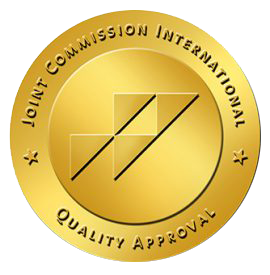Awake craniotomy for Brain Tumors: indications, benefits, types of anesthesia and surgical techniques
Omar Al Awar, M.D.1, 2, Patricia Nehmeh, M.D.2, 3, Georgio Haddad, M.D.4,
- 1. Mount Lebanon Hospital University Medical Center, Neurosurgery department
- 2. Clinical Assistant professor at University of Balamand
- 3. Mount Lebanon Hospital University Medical Center, department of Anesthesiology
- 4. Neurosurgery Resident at University of Balamand
Introduction
Awake craniotomy can be defined, as a neurosurgical procedure performed while the patient is awake and alert during surgery. Awake brain surgery is used to treat brain tumors and epileptic seizures near areas that control language, movement or cognition, movement disorder, and recently during neurovascular surgery (4). When the patient is alert, we can ask questions and request specific movements or responses from the patient so we can monitor brain performance as we operate, this is can help ensure the brain remains safe while the tumor is removed. Early in its history, awake craniotomy was used for the treatment of epilepsy. Modern era of awake craniotomies began in the late 1920s, when Wilder Penfield was attempting to treat patients who had intractable epilepsy, Archer in 1988 first surgeon who performs awake Craniotomy for brain tumors (1,2). This procedure has become increasingly popular with wider indications prompted by accumulating evidence that patients receiving awake craniotomy have better outcomes in many aspects. The improvements in anesthetic agents and techniques, the application of neuro-navigation, and intraoperative electrical mapping (fig.1) are a reliable method to minimize the risk of permanent deficit during surgery for brain tumors in eloquent areas (2).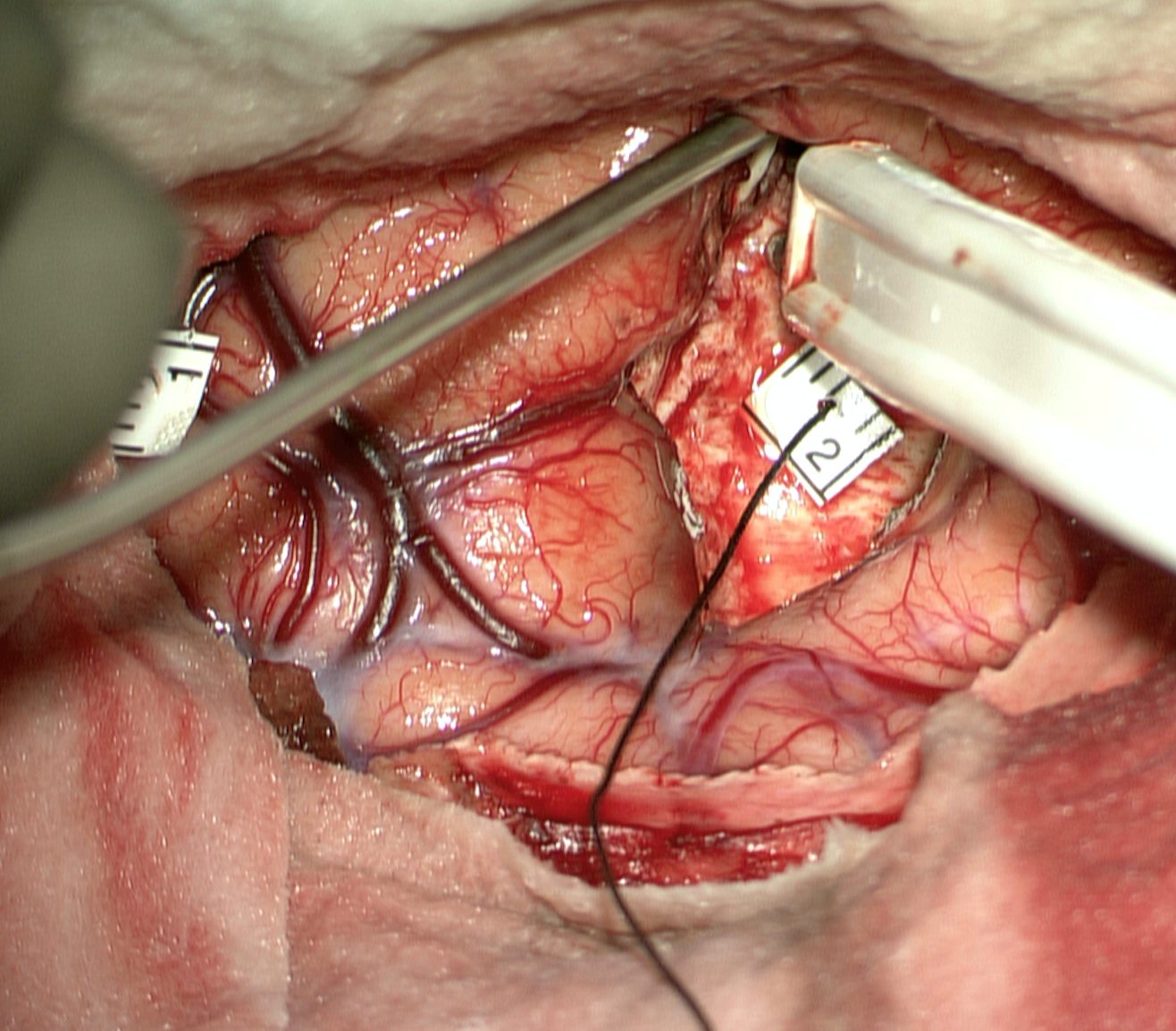
Fig 1. Brain stimulation with a bipolar prob for cortical mapping (number 1 ), and the subcortical tract (number 2).
Indications and Contraindications
There are many indications for awake craniotomy. For neuro-oncology, the resection of any intra-axial masses that are near eloquent areas can benefits from awake surgery, as the patient monitoring and the brain mapping that we perform in these surgeries enable us to resect more of tumor without injuring the cortical centers and subcortical tracts with less risk of post-operative neurological morbidities when we compare it to general anesthesia (5,6). Furthermore, as the extent of resection of the lesions in neuro-oncological surgeries is directly correlated to the survival and quality of life in a lot of the tumors, then awake craniotomy can be superior to the classical surgeries. In a particular cases in-patient who has a specific skills like musicians we perform functional MRI to localize the musical perception area and the relation with the tumor to resect the lesion without disturbing the musical ability it is a individually tailored mapping (Fig. 2).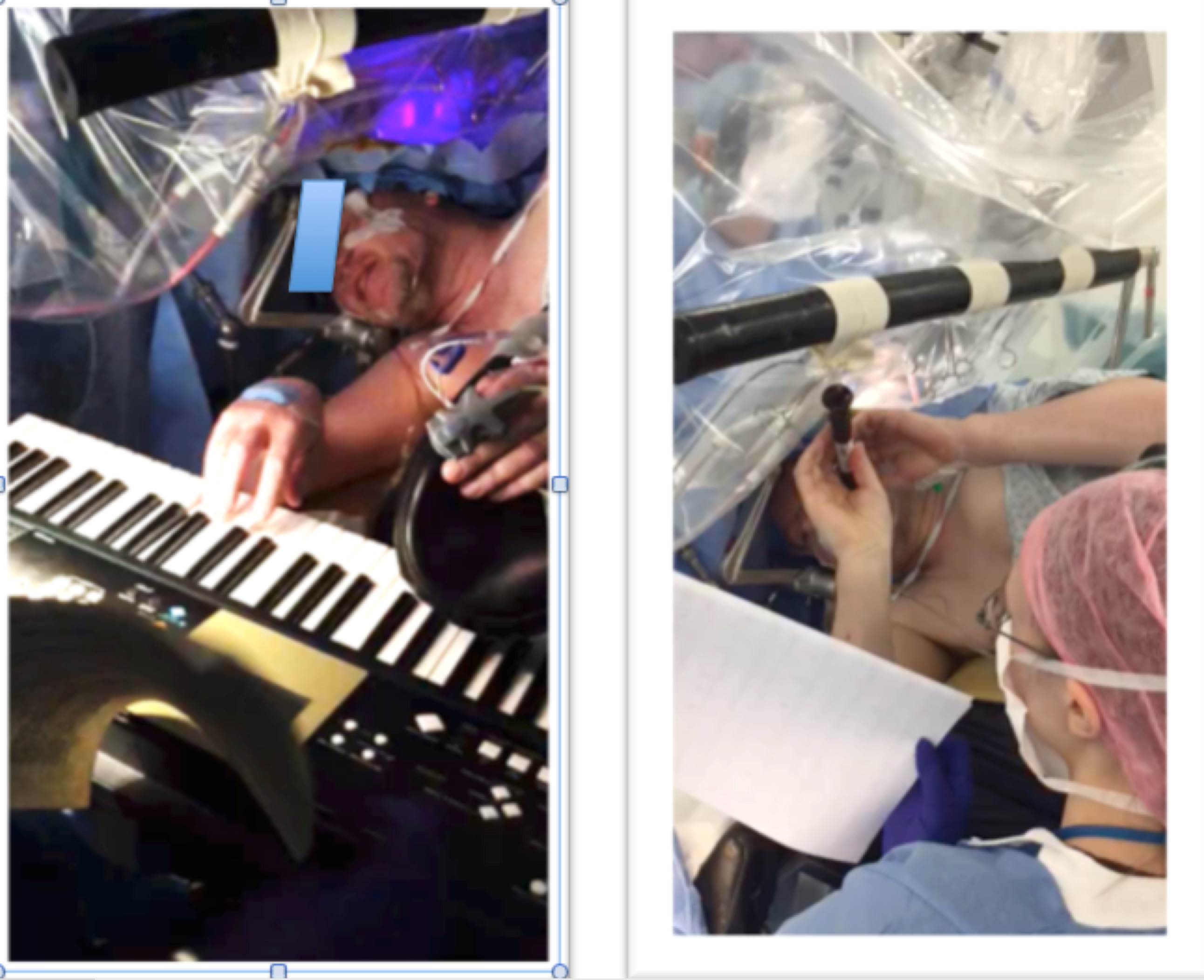
Fig. 2. This a case of a musician who underwent awake surgery playing music during his surgery to save his musical ability, he plays the flute and piano.
In epilepsy surgeries, in the case of drug resistant seizures where the foci are extra temporal, the resection of these foci becomes difficult, as they are closer to eloquent cortex in the majority of cases. These cases benefit from awake craniotomy as the mapping of the cortex prior to resection protect the important areas and makes the surgery safer.
Also, the utility of awake surgeries in some neuro-vascular procedures, awake surgery during aneurysm clipping to prevent ischemic episodes during temporary clipping (4), and endarterectomies, where the frequent examination of the patient while clamping the diseases carotid to perform the surgery can show the examiner the dependency of the patient on that particular vascular axis, and help the surgeon chose the proper surgical technique (shunting vs no shunting). Another benefit that can push the surgeon to go for awake surgery to prevent the risks of general anesthesia may prevent longer hospitalization and ICU stay, also it will help the anesthesiologists use less invasive methods and catheters to monitor the patients.
On the other hand, there is many factors that contra-indicate awake surgeries. The most important one is patient cooperation, as in cases of agitation or non-cooperation while performing the surgery can lead to dangerous outcomes and injuries. This makes patient selection very important. No clear consensus on the proper age for awake surgeries, as they were performed on pediatric patients as well as geriatric patients. Patients who have difficulty talking, who are somnolent or confused due to some tumor may not benefit from awake surgery even if its location is ideal due to the impossibility to perform per-op examinations. Furthermore, long surgeries with heavy blood losses, and uncomfortable positions make a relative contra-indication to awake surgery as they can lead to agitation and non-cooperation. Obesity, sleep apnea and other conditions that can lead to insecure airway stability can make a relative contra-indication, and so a proper evaluation by the anesthesiologist pre-op should be performed.
Anesthesia in Awake craniotomy
PREOPERATIVE PREPARATION
Awake craniotomy requires a highly cooperative patient and an expert surgical team. Preoperative airway evaluation should be performed in all patients. Control of preoperative anxiety before awake craniotomy is important and can be relieved by proper preoperative counseling about the anesthetic and surgical procedures, therefore preoperative consultation by anesthesiologist is an important process .The anesthesiologist should outline the overall awake craniotomy procedures including the positioning, scalp nerve block, the possible discomfort, and the motor and language test. A good anesthesiologist-patient relationship is essential and the anesthesiologist should attempt to alleviate anxiety and discomfort of the patient.ANESTHETIC APPROACHES FOR AWAKE CRANIOTOMY
Various anesthetic techniques may be useful for awake craniotomy. Among them, there are two commonly used anesthetic methods for awake craniotomy: monitored anesthesia care (MAC) and asleep-awake-asleep (AAA) technique . The anesthesiologists should provide sufficient sedation and analgesia during the initial craniotomy, a rapid and smooth emergence of patients is required for intraoperative neurophysiologic test including motor and language test, and brain mapping.
After the tumor resection, sedation is often sufficient until completion of the surgery. The sedation profile during the first stage of awake craniotomy, from scalp incision to dura opening, plays a pivotal role in the quality of intraoperative consciousness. The anesthesiologist should restore the consciousness of patient back to the preoperative state for neurophysiologic tests and brain mapping to be performed successfully.
In our institution at Mount Lebanon hospital-Balamand university hospital, the combination of propofol and remifentanil has been considered as the standard protocol for sedation during the first stage of awake craniotomy because of the ease of use and reliability . The propofol and remifentanil-based AAA technique allows a smooth emergence and rapid recovery of consciousness for intraoperative neurophysiologic testing . The propofol and remifentanil-based MAC technique is associated with dose-dependent respiratory depression, which can produce hypercapnia and subsequent brain edema. Therefore, achieving the optimal sedation level for an individual is crucial. Meanwhile, light sedation has the risk of causing accidental patient movement and anxiety is likely. Generally, state of drowsiness but readily responsive is considered as the optimal sedation in awake craniotomy and experienced anesthesiologists are required to accomplish this balance in the complex setting.
Dexmedetomidine an alternative to propofol for the MAC technique during awake craniotomy can also be used. It is a selective alpha-2 agonist with sedative, analgesic, anxiolytic, and sympatholytic properties. The advantageous effects of dexmedetomidine, such as minimal effect on neurophysiologic monitoring, stable hemodynamics, and minimal respiratory depression, makes it suitable for sedation during awake craniotomy . Dexmedetomidine and the scalp nerve block were used successfully in awake craniotomy but it can cause bradycardia that’s why it needs a good dose monitoring techniques.
Anesthesia for awake craniotomy is one of the most challenging fields for anesthesiologists. Both the MAC and AAA techniques are feasible and safe anesthetic techniques for awake craniotomy, and adequate regional block is required for effective intraoperative pain control and better patient satisfaction. Appropriate patient selection, perioperative psychological support, and proper anesthetic management for individual patients in each stage of surgery are crucial for procedural safety, success, and patient satisfaction.
Pre-operative planning
Most of the awake craniotomies for brain tumor resection should be discussed in the neuro-onology multi-disciplinary team meeting. A proper radiological imaging should be done for surgical planning including diffuse tensor imaging (DTI) well If the tumor. A formal speech and motor power assessment evaluation, which is usually carried out up to 2 days before surgery (baseline) and repeated intra-operatively to identify error during stimulation. Although fMRI is increasingly being adopted as a practical preoperative planning tool for brain tumor resection, there remains a substantial degree of discrepancy with regard to its current use and presumed utility.A comprehensive neuropsychological evaluation, patient’s emotional state and ability to cooperate during awake surgery is usually assessed and meeting the team before surgery is crucial as well.
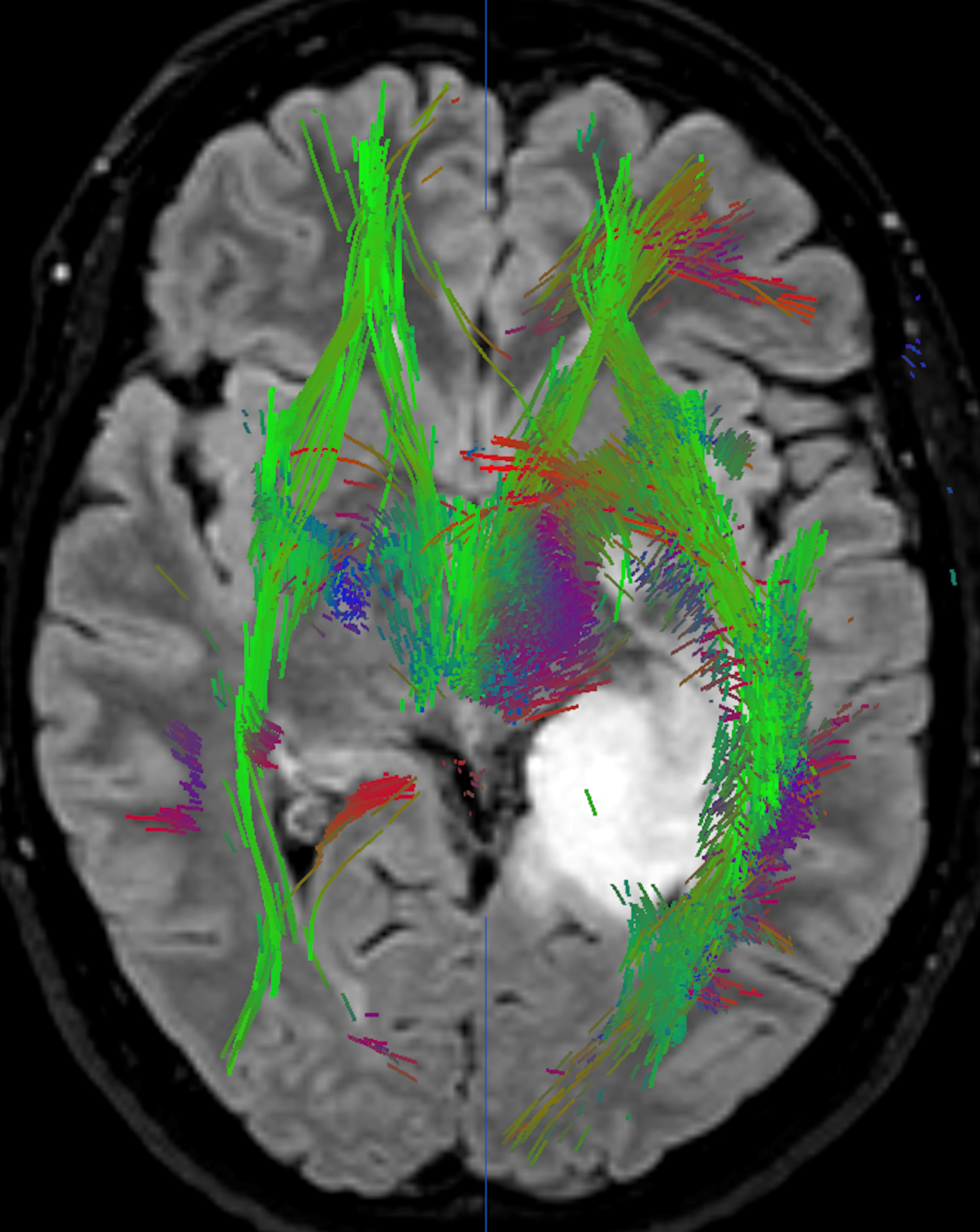
Fig. 3. Diffuse tensor imaging MRI (DTI), showing the tumor in white and the subcortical tract in relation with the tumor in green.
<2>Surgical Technique As with any awake technique, delays and technical problems in the operating theatre should be avoided. The team should be made aware of the presence of an awake patient by a sign on the entrance od the operating room and noise should be kept to a minimum. The operating theatre becomes a crowded place and staff movement should be restricted and a calm atmosphere should maintained at all times. Patient comfort is very important we should be asking the patient if they are comfortable and the operating table should be adequately padded and attention paid to head and limb positioning and that should be double checked before draping the patient. It is usually preferable to allow the patient to position themselves on the operating table before institution of sedation or anaesthesia so that they may lie in the most comfortable position. If a Mayfield head fixator is used, adequate local anaesthesia should be applied prior to application of the pins. Surgical drapes should be positioned allowing the anaesthetist constant and unim- peded access to the airway whilst preserving a sterile field. The use of clear drapes reduces the feelings of claustrophobia.
Whether sedation or an asleep–awake–asleep technique is chosen, it is crucial to apply adequate local anaesthesia on the skin incision whar we call elliptic block using combinations of lidocaine and bupivacaine with epinephrine (Fig.3). The skin, scalp, pericranium and periosteum of the outer table of the skull are all innervated by cutaneous nerves arising from branches of the trigeminal nerve, Subcutaneous infiltration with local anaesthesia in the manner of a field block or over specific sensory nerve branches, blocks afferent input from all layers of the scalp (Fig. 4).
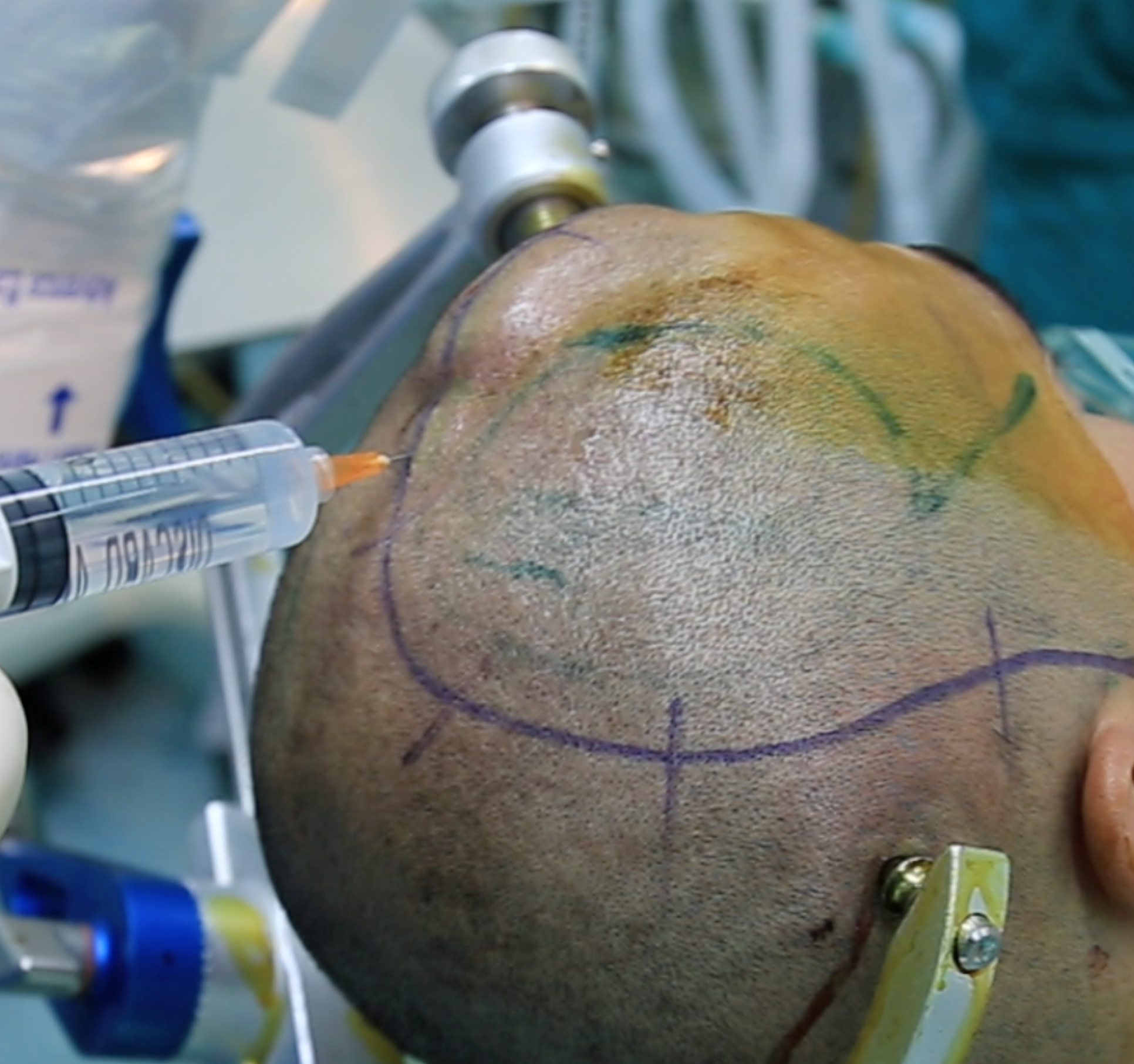
Fig 4. Elliptic skin infiltration with local anesthesia.
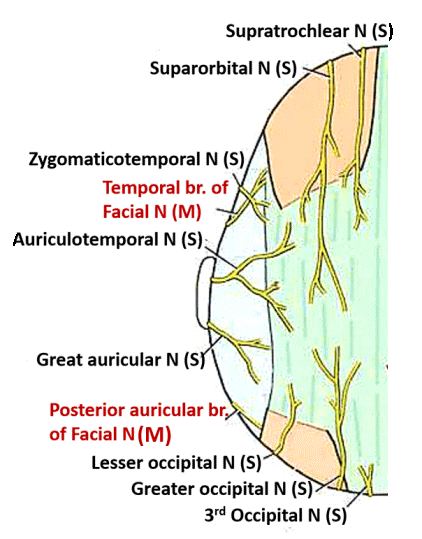
Fig. 5 Nerve supply of the scalp.
The skull can be drilled and opened without pain or discomformt to the patient since there is no sensory innervation, however the dura is innervated by branches from all three divisions of the trigeminal nerve, the recurrent meningeal branch of the vagus, and by branches of the upper cervical roots (4) . Usually in most of the brain tumor surgery we use neuro-navigation to minimize the size of the incision, and to identify the vascular anatomy, and cortical anatomy (Fig. 5).
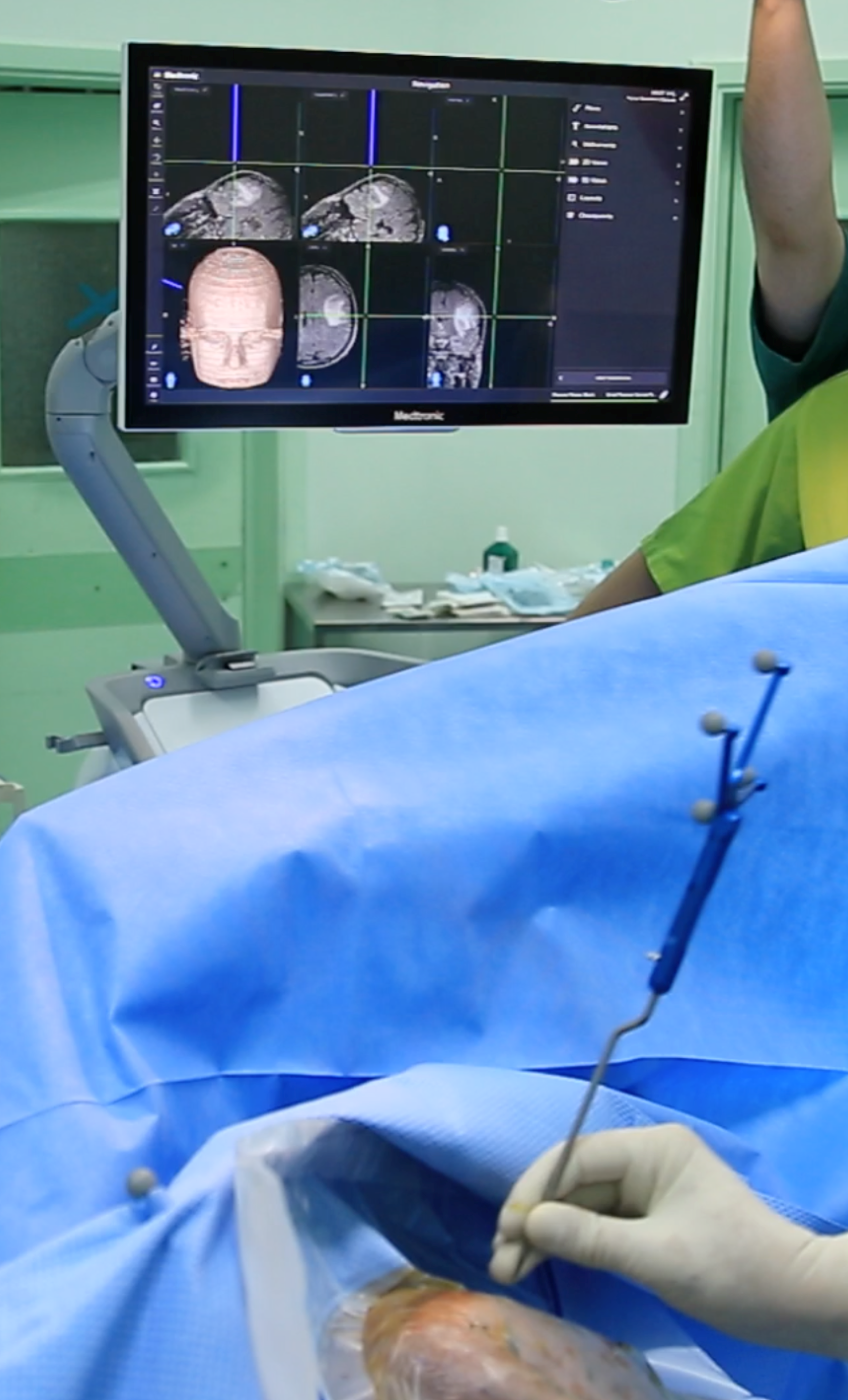
Fig. 6. Application of the Neuro-Navigation.
Functional neuroimaging has improved pre‐planning of surgery in eloquent cortical areas, but remains unable to map white matter. Thus, tumour resection in functional subcortical regions still presents a high risk of sequelae. The authors successfully used intraoperative electrical stimulations to perform subcortical language pathway mapping in order to avoid postoperative definitive deficit, and correlated these functional findings with the anatomical location of the eloquent bundles detected using postoperative MRI (5,6).
Awake phase
The goal is to transition smoothly and rapidly without agitation, confusion, or drowsiness from sedation or anesthesia to an awake patient. The patient needs to be engaged, cooperative, pain-free, and comfortable for mapping and tumor resection. All agents are stopped; I personally prefer to keep the patient awake all the way. Pain should be managed with supplemental Local aesthesia. Non-pharmacological intraoperative management should be used to reduce fear and anxiety. Empathy, handholding, reassurance, ongoing encouragement, coaching, and conversation are all useful and important. A sponge soaked with ice-cold water can be used to wet the patient’s lips and mouth for comfort. The patient can be allowed to move limbs and hips at appropriate times. An air blanket is used to provide either warm or cool air to maintain a comfortable temperature (9,10,11).Physiological test
Motor and sensory pathways
Awake surgery provides accurate mapping of both cortical and subcortical pathways of the limbs, face, and mouth. Mapping can elicit or inhibit movements. Responses of orofacial musculature, laryngeal activity, and vocalizations can be recorded as tingling or movement, for example, withdrawal of protruded tongue, or speech arrest (8,9). Similarly, tingling, twitching, or movement in the limbs may be elicited, most commonly arms and hand (11,12). The anesthesiologist should observe the patient carefully and report every movement to the surgeon that is why the anesthesia team should examine the patient before surgery, and the patient should also be instructed to report any abnormal movement or sensation. The stimulation mapping allows not only delineation of the cortical areas but also allows the surgeon to stimulate and monitor subcortical tracts.
Fig. 7. Cortical stimulation where identified the motor strip whit dots in the left image, and the right image demonstrated the tumor resection just adjacent to the motor strip and subcortical fibers of the cortico-spinal tract were identified as well.
Language
It is difficult to localized speech areas based on anatomical landmarks. To assess speech, the Visual Object Naming Test is frequently used. The Boston Naming Test consists of 60 drawings of common objects graded in difficulty, for example, window, car, dog, and guitar (17). In addition, language functions can be studied with greater refinement and complexity. Bilingual patients need to be tested in both languages, as the anatomical areas may not entirely overlap. Classic models of language organization posited that separate motor and sensory language foci existed in the inferior frontal gyrus (Broca’s area) and superior temporal gyrus (Wernicke’s area), respectively, and that connections between these sites (arcuate fasciculus) allowed for auditory-motor interaction. These theories have predominated for more than a century, but advances in neuroimaging and stimulation mapping have provided a more detailed description of the functional neuroanatomy of language. New insights have shaped modern network-based models of speech processing composed of parallel and interconnected streams involving both cortical and subcortical areas. Recent models emphasis- size processing in “dorsal” and “ventral” pathways, mediating phonological and semantic processing, respectively, Phonological processing occurs along a dorsal pathway, from the posterosuperior temporal to the inferior frontal cortices. On the other hand, semantic information is carried in a ventral pathway that runs from the temporal pole to the basal occipitotemporal cortex, with anterior connections (Fig. 7)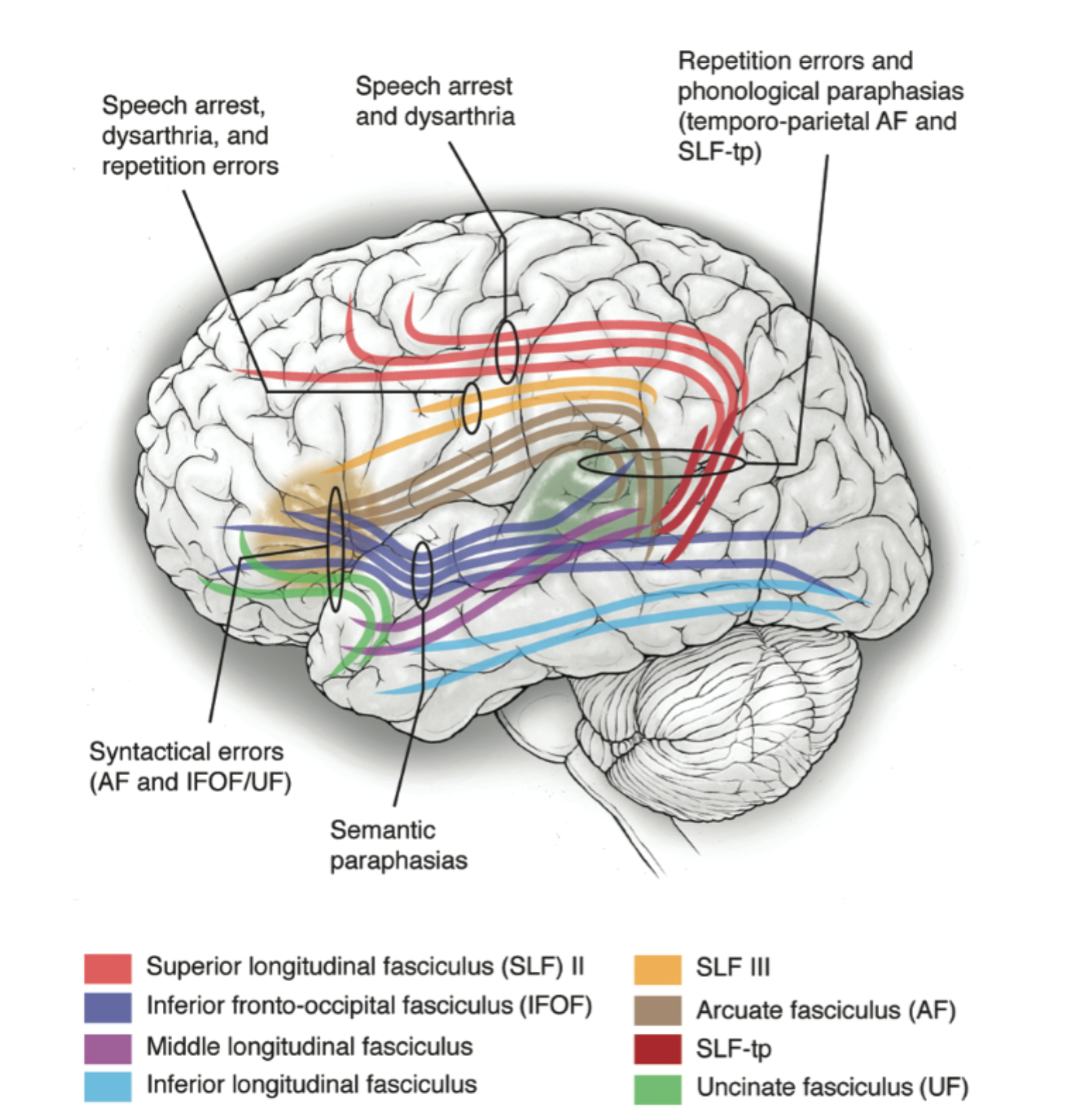
Fig 8. Subcortical anatomy of language, schematic illustration of various subcortical tracts involved in language processing, individual white matter tracts are color coded. Stimulation and lesions to individual tracts lead to characteristic language deficits, represented by callouts from each tract. The subcallosal fasciculus is not shown. See text for more details. Copyright Edward F. Chang. Published with permission. (Mitchel s. Berger et.al).
Visual
Intraoperative brain mapping of cortical visual cortex with subcortical mapping of visual tracts may be useful to minimize risk of permanent hemianopia in tumors located in the parieto-occipital area. Identification of optic radiations by direct subcortical electrostimulation is a dependable method to reduce permanent injury in surgery for gliomas involving visual pathways (16, 17). Methods to identify other functions such as memory and counting are of interest and being developed. In Fig. 9 we demonstrated a case where stimulating we could identify the optic radiation by stimulating the fibers and the patient feels flash light in the visual field.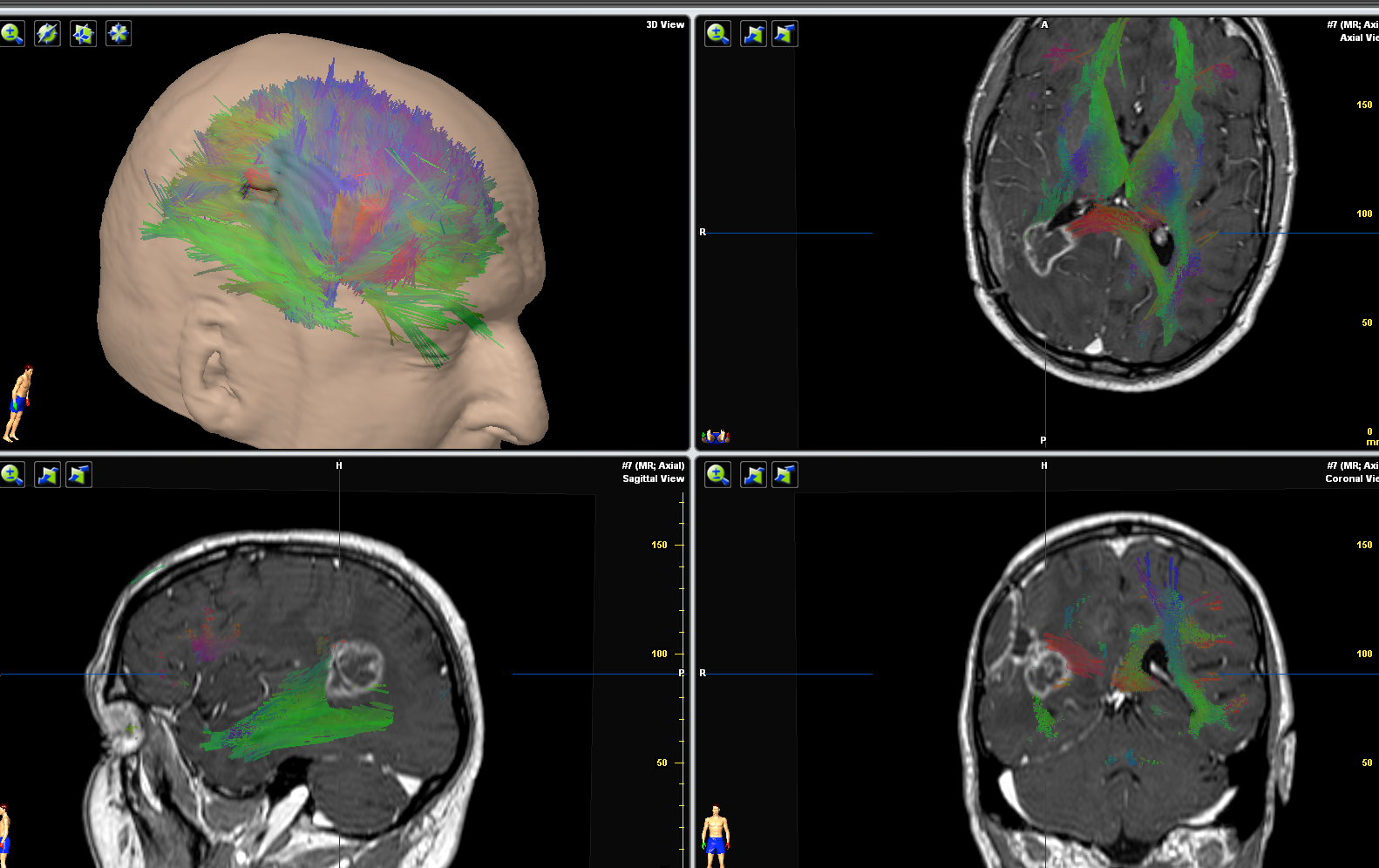
Fig 9. This is a case of glioblastoma just above the fibers of the optic radiation (Blur arrow).
Challenges during the awake phase
The main challenges during awake craniotomy include: hypertension, seizures, somnolence, agitation, oxygen desaturation, tight brain, and shivering.• (1) Hypertension: This is most commonly secondary to pain, agitation, and anxiety. However, other causes should also be sought such as hypoxia, hypercapnia, and dexmedetomidine (DEX) associated (6,7,8,9). Treatment should focus on managing the cause. Labetalol or esmolol may sometimes be necessary.
• (2) Seizures: Seizure incidence is 3% to 16% and happens during cortical and subcortical stimulation mapping (14,15). The incidence is less if the surgeon avoids stimulating an area twice in rapid succession. Continuous monitoring of electrocorticography for spikes or sharp waves within 5 seconds after each stimulation allows early detection (18). Patients with a history of seizure and younger patients especially with tumors of the frontal lobe are more prone to seizures.19 Intraoperative seizures have a higher incidence of transient motor deterioration and longer hospitals stay (17,18). First-line treatment of stimulation-evoked seizures is irrigation of the cortex with cold crystalloid solution, and this can be repeated as often as necessary.
• (3) Emergence agitation and delirium may occur if the pre-awake phase is with GA or deep sedation. Contributing factors include older age; pain; disorientation; inappropriate use of naloxone, flumazenil, neostigmine, and atropine; oxygen desaturation; hypercapnia; urethral stimulation; and bladder distention. It can be very difficult to manage, and there is no consensus on the best approach. An approach is to reinduce anesthesia with a propofol bolus, then administer a dexmedetomidine bolus before the 2nd wake-up attempt (12, 13).
• (4) Somnolence: This usually reflects residual anesthetic effects or from anti-consultants. The best strategy is prevention by early termination of DEX and propofol, and the avoidance of large doses of midazolam or longer acting opioids.
• (5) Nausea and vomiting: These are most commonly associated with opioids; other common associated factors are age, gender, and anxiety. The incidence is much lower with the common use of propofol. Management includes empathy, ondansetron, and small dose of propofol
• (6) Hypothermia and shivering: These should be prevented by the use of blankets, warm air devices, and appropriate room temperature. Tramadol or meperidine may be effective (9). Post-awake and post operative care
If we perform awake-asleep-awake anesthesia type than similar to the pre-awake phase, one can also choose awake, spontaneous ventilation under light or deep sedation, or GA with airway control. Sedation often suffices. The patient usually requires lower rates of sedative infusions during the postawake phase than during the pre-awake phase as patients are often fatigued, and there is a lower level of painful stimuli during skull closure. The patient should initially require to be admitted to the neurosurgical intensive care unit, with hourly neuro observation in the fist 24 hours. Pain management can be achieved by small doses of opioids intravenously including with patient controlled analgesia, oral opioids combined with anti-inflammatory drugs
References
1. Berger MS, Ojemann GA. Intraoperative brain mapping techniques in neuro- oncology. Stereotactic Funct Neurosurg. 1992;58(1-4):153-161.2. Berger M. Functional mapping-guided resection of low-grade gliomas. Clin Neurosurg. 1995;42:437-452.
3. Sanai N, Berger MS. Mapping the horizon: techniques to optimize tumor re- section before and during surgery. Clin Neurosurg. 2008;55:14-19.
4. Abdulrauf SI: Awake craniotomies for aneurysms, arteriove- nous malformations, skull base tumors, high flow bypass, and brain stem lesions. J Craniovertebr Junction Spine 6:8–9, 2015.
5. Danks RA, Aglio LS, Gugino LD, Black PM. Craniotomy under local anesthesia and monitored conscious sedation for the resection of tumors involving eloquent cortex. J Neurooncol. 2000;49(2):131-139.
6. Taylor MD, Bernstein M. Awake craniotomy with brain mapping as the routine surgical approach to treating patients with supratentorial intraaxial tumors: a prospective trial of 200 cases. J Neurosurg. 1999;90(1):35-41.
7. Chakravarthy M, Mitra S, Muralimanohar V, Jawali V. Congenital pleuro- pericardial fistula complicating awake cardiac surgery. J Cardiothorac Vasc Anesth. 2010. [Epub ahead of print]. PMID: 20005743.
8. Torres HM, Lo ́pez SC. Awake laminotomy and discectomy using Dexmedeto- midine as anesthetic. P R Health Sci J. 2009;28(4):354-355.
9. SerletisD and BernsteinM.Prospective study of awake craniotomy used routinely and nonselectively for supratentorial tumors. J Neurosurg. 2007;107(1):1-6.
10. Khu KJ, Doglietto F, Radovanovic I, et al. Patients’ perceptions of awake and outpatient craniotomy for brain tumor: a qualitative study. J Neurosurg. 2010;112(5):1056-1060.
11. GuptaDK, ChandraPS, OjhaBK, SharmaBS, MahapatraAK, MehtaVS. Awake craniotomy versus surgery under general anesthesia for resection of intrinsic lesions of eloquent cortex—a prospective randomised study. Clin Neurol Neurosurg. 2007;109(4):335-343.
12. Oldfield RC. The assessment and analysis of handedness: the Edinburgh in- ventory. Neuropsychologia. 1971;9(1):97-113.
13. RouxFE,LubranoV,Lauwers-CancesV,TremouletM,MascottCR,DemonetJF. Intra-operative mapping of cortical areas involved in reading in mono- and bilingual patients. Brain. 2004;127(pt 8):1796-1810.
14. Berger MS, Deliganis AV, Dobbins J, Keles GE. The effect of extent of resection on recurrence in patients with low grade cerebral hemisphere gliomas. Cancer. 1994;74(6):1784-1791.
15. Manninen PH, Balki M, Lukitto K, Bernstein M. Patient satisfaction with awake craniotomy for tumor surgery: a comparison of remifentanil and fentanyl in conjunction with propofol. Anesth Analg. 2006;102(1):237-242.
16. Whittle IR, Midgley S, Georges H, Pringle AM, Taylor R. Patient perceptions of ‘‘awake’’ brain tumor surgery. Acta Neurochir (Wien). 2005;147(3):275-277.
17. Boulton M, Bernstein M. Outpatient brain tumor surgery: innovation in surgical neurooncology. J Neurosurg. 2008;108(4):649-654.
18. Baker GR, Norton PG, Flintoft V, et al. The Canadian Adverse Events Study: the incidence of adverse events among hospital patients in Canada. CMAJ. 2004;170(11):1678-1686.
19. Duffau H. Lessons from brain mapping in surgery for low-grade glioma: insights into associations between tumor and brain plasticity. Lancet Neurol. 2005;4(8): 476-486.
20. Duffau H, Lopes M, Arthuis F, et al. Contribution of intraoperative electrical stimulations in surgery of low grade gliomas: a comparative study between two series without (1985–96) and with(1996–2003) functional mapping in the same institution. J Neurol Neurosurg Psychiatry. 2005;76(6):845-851.







